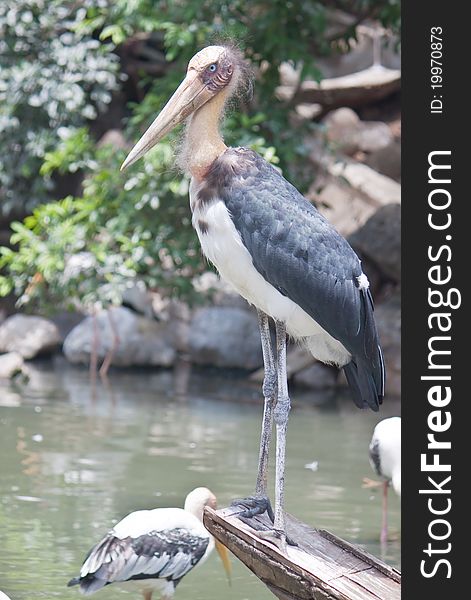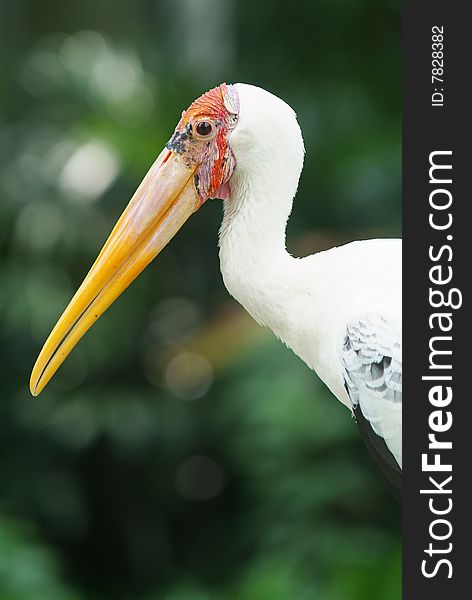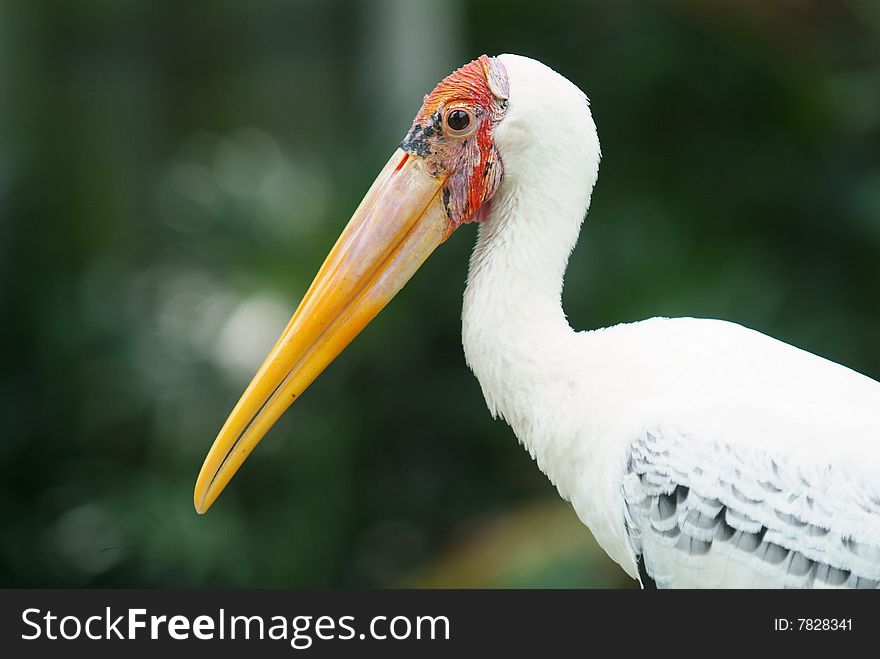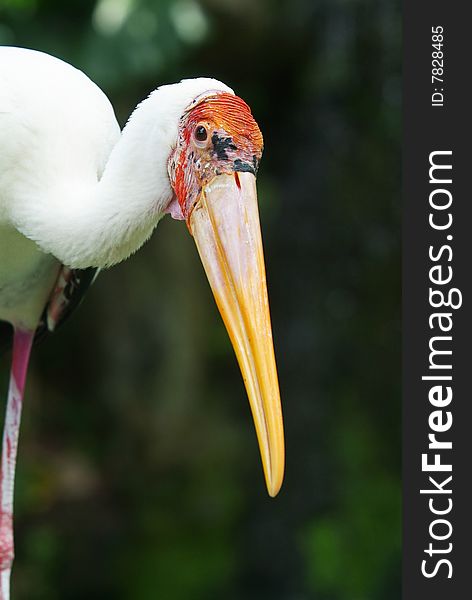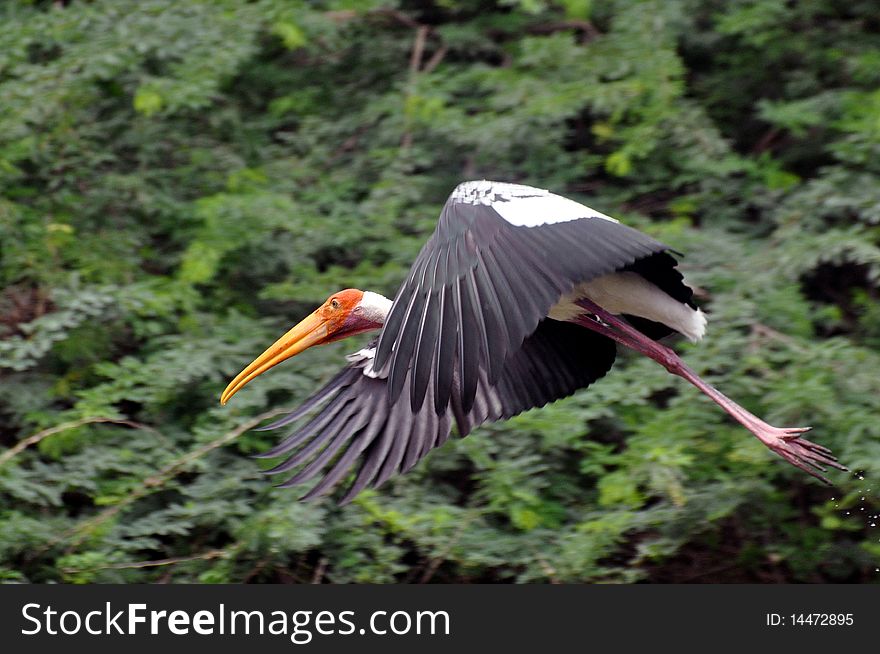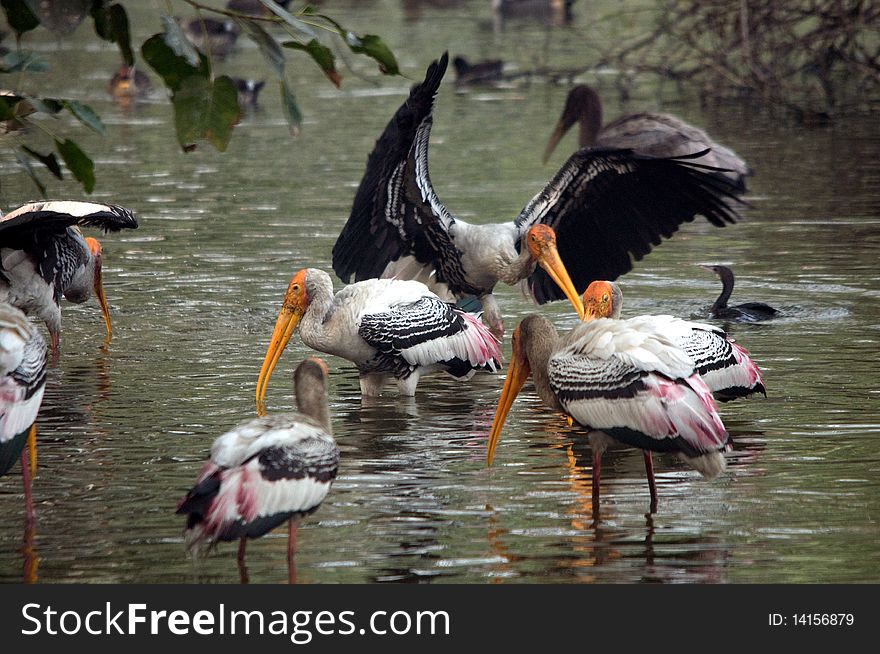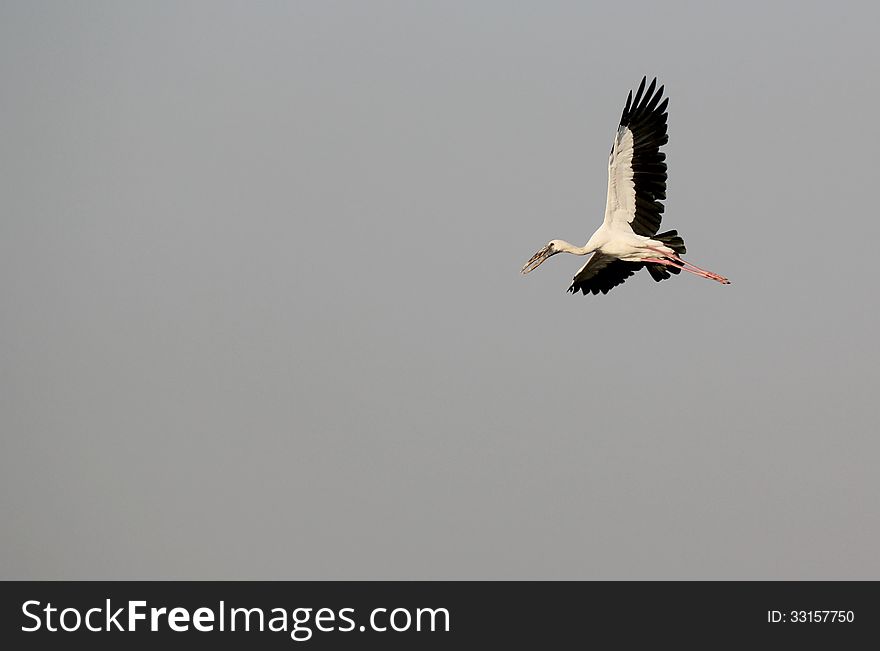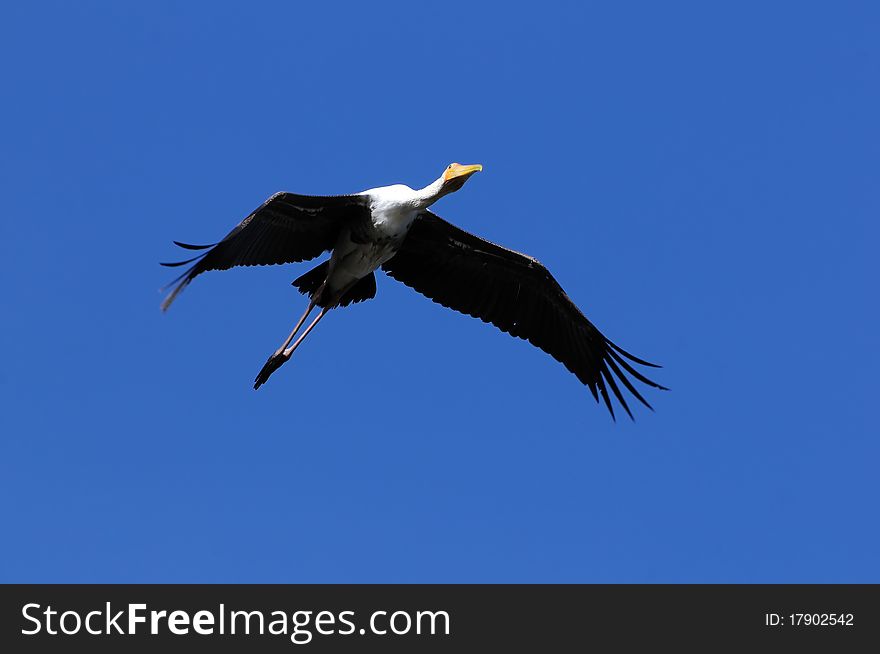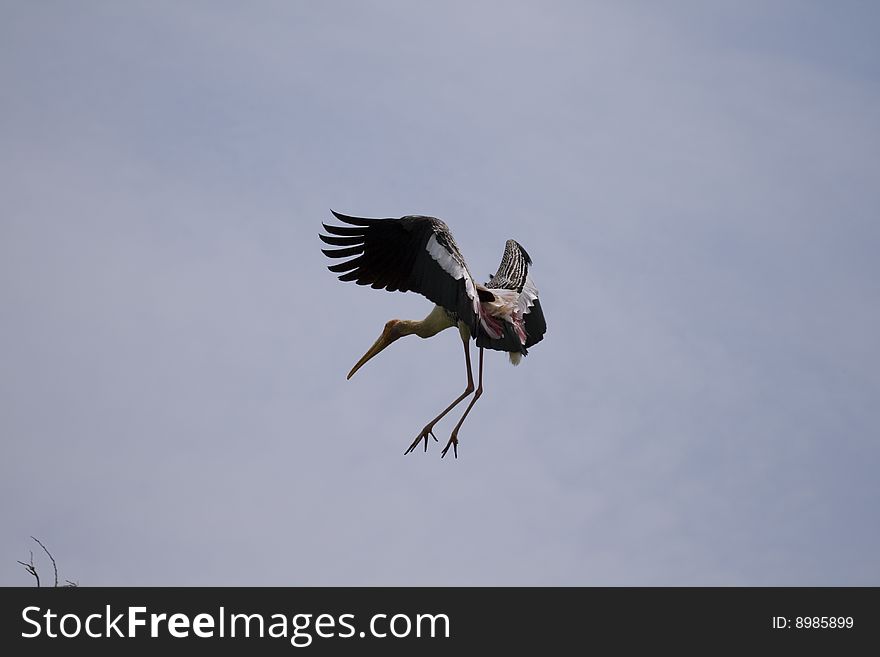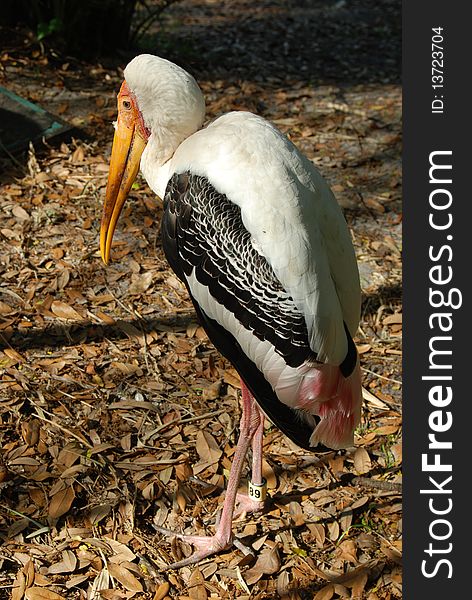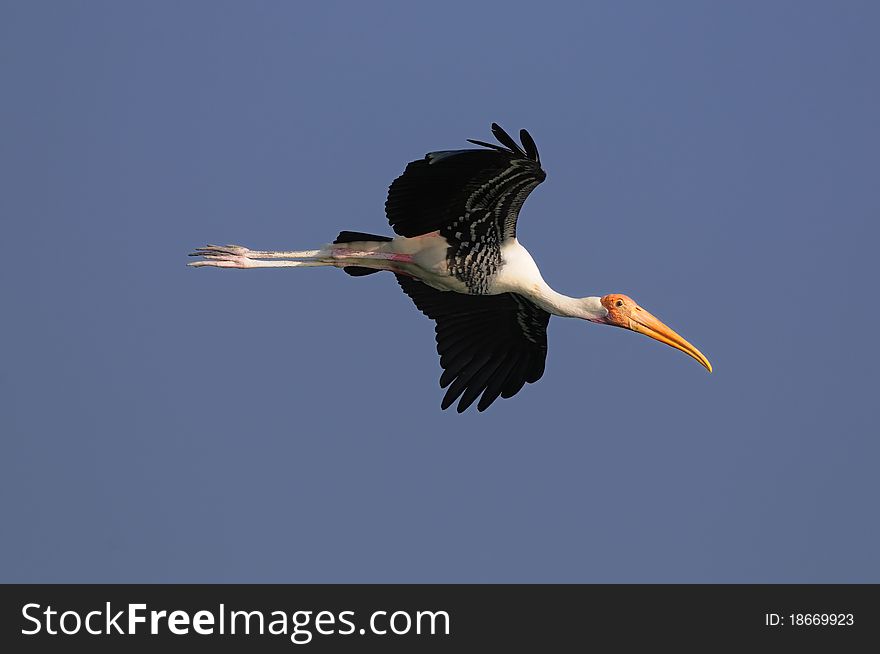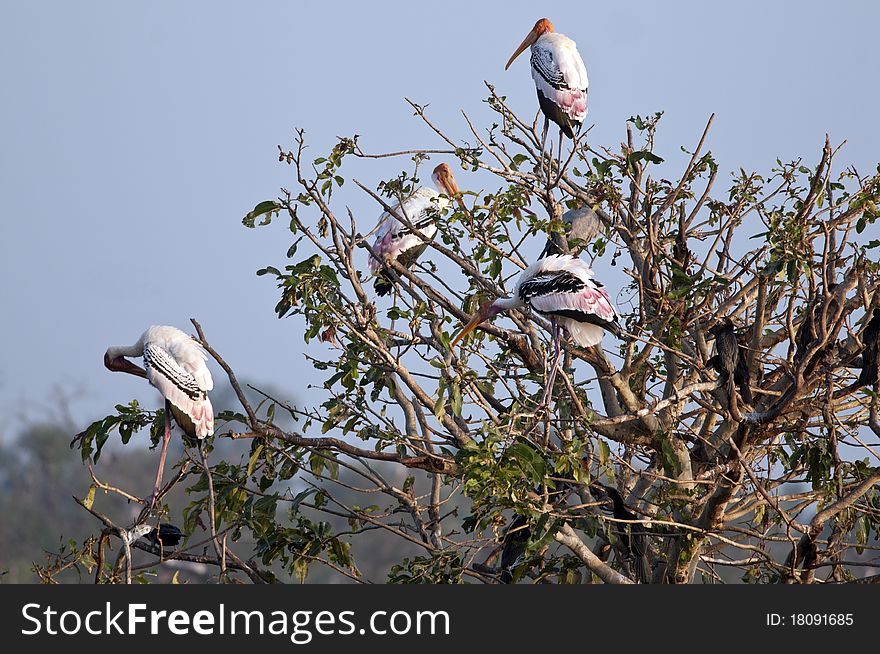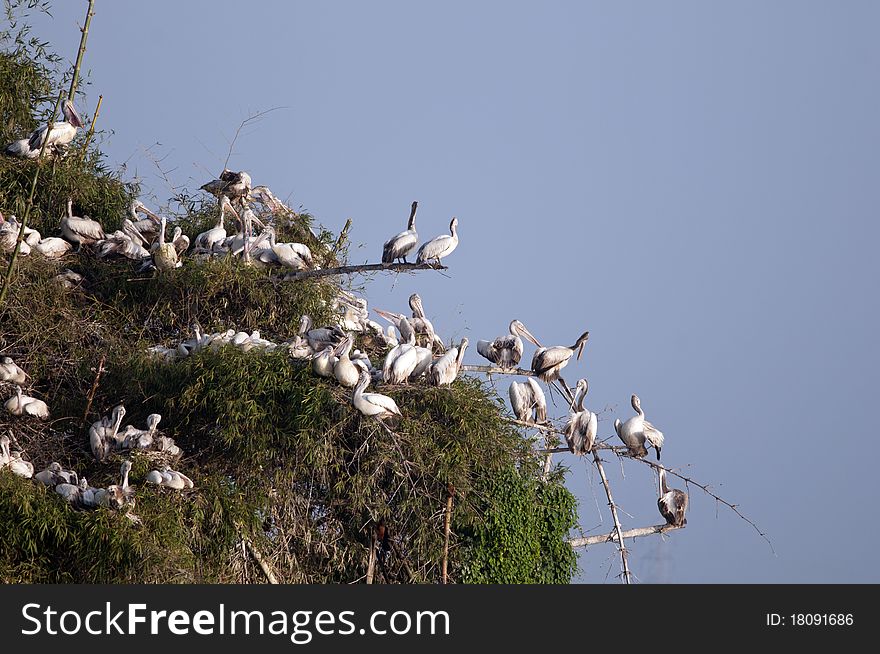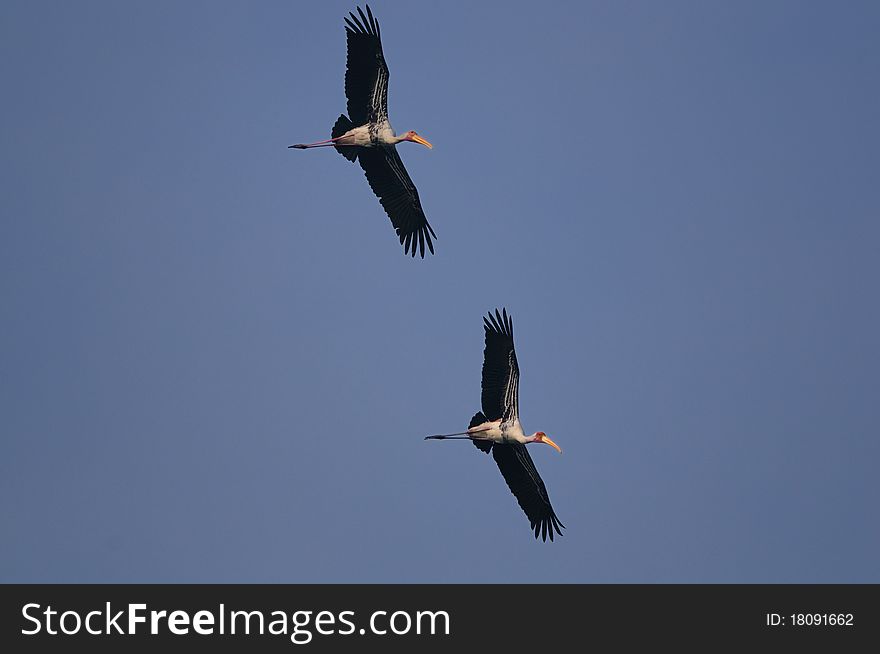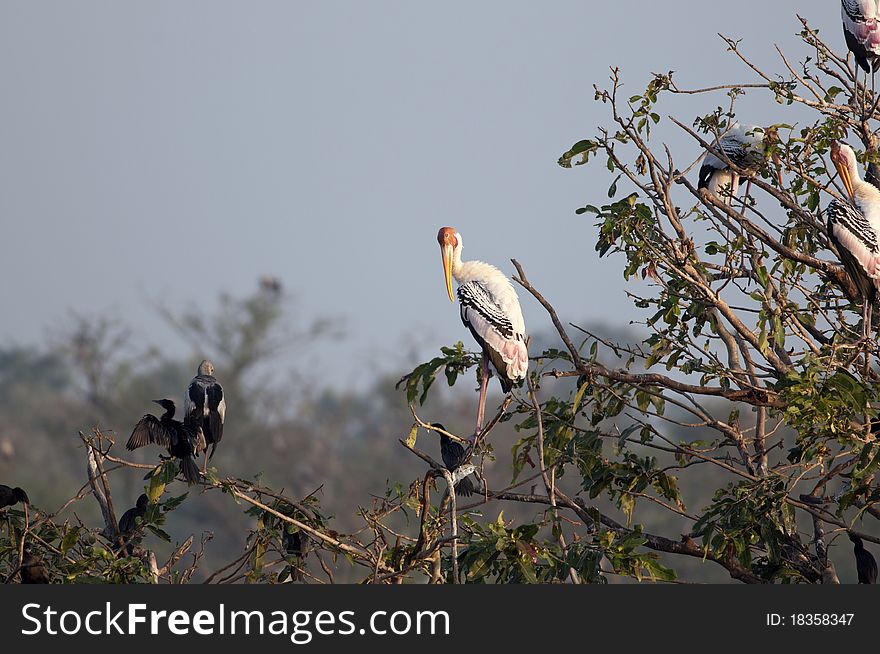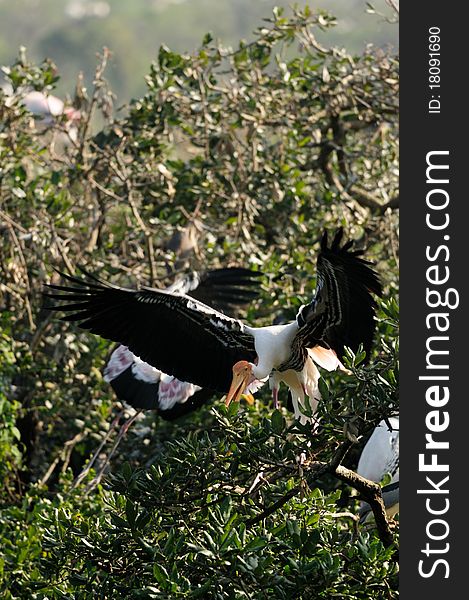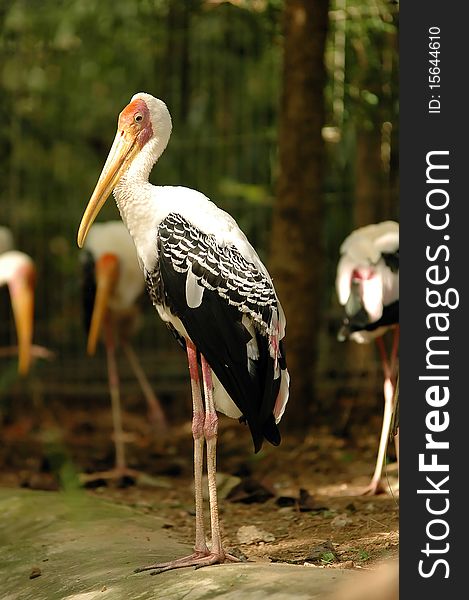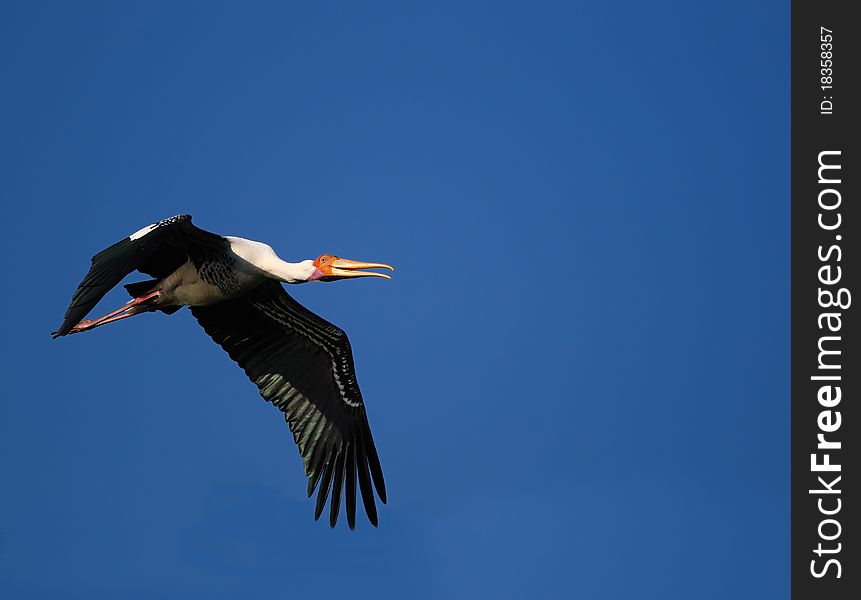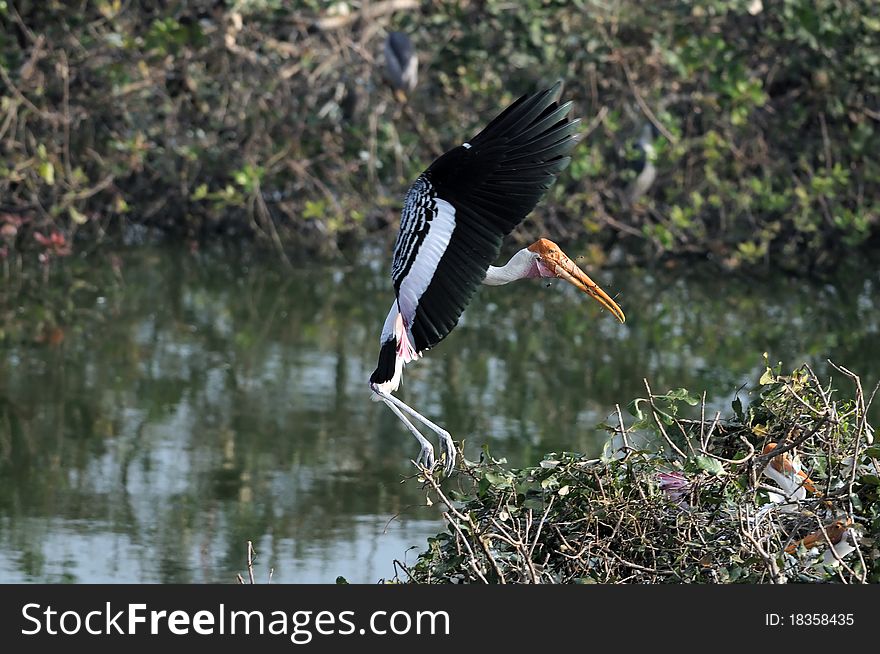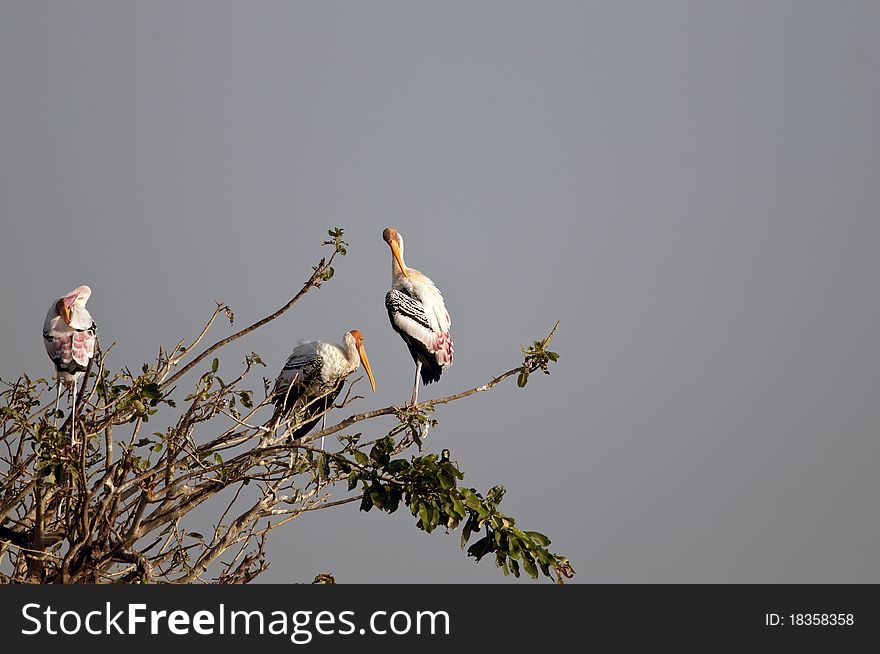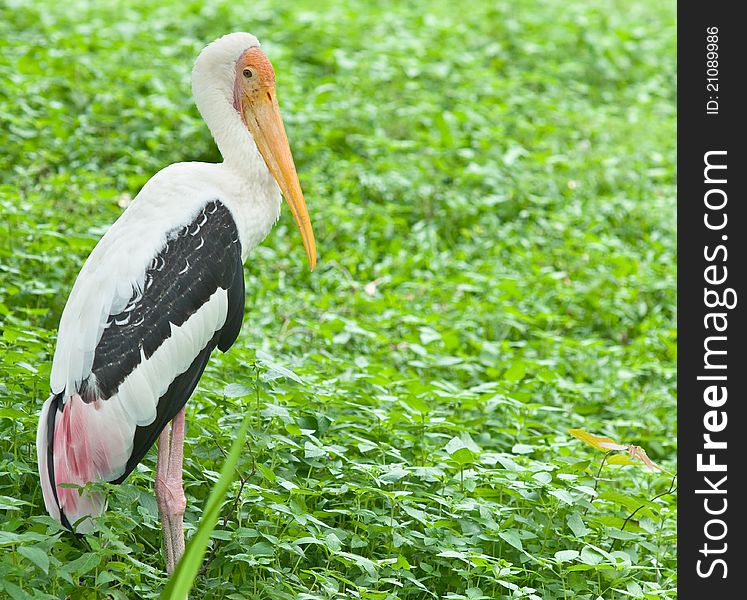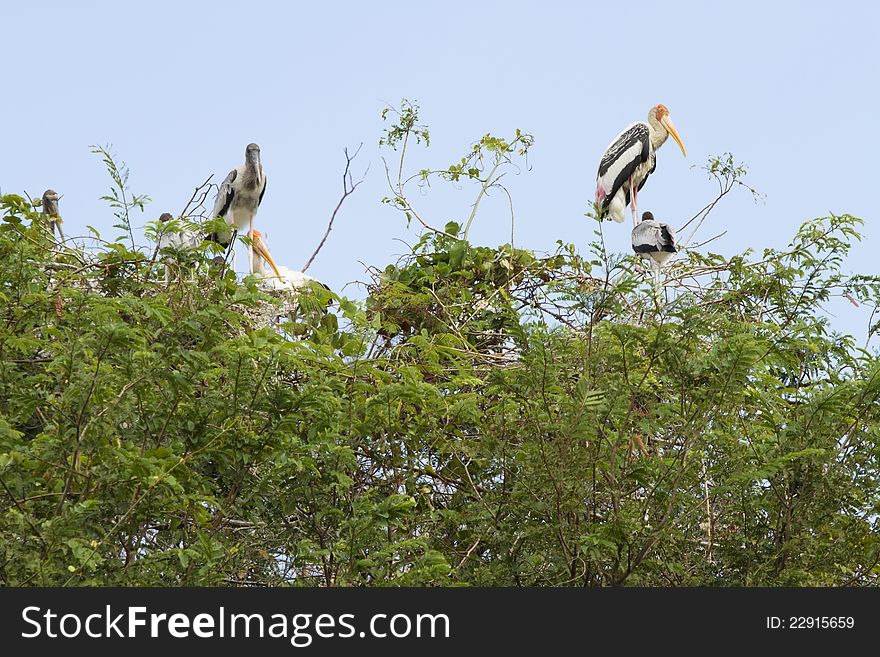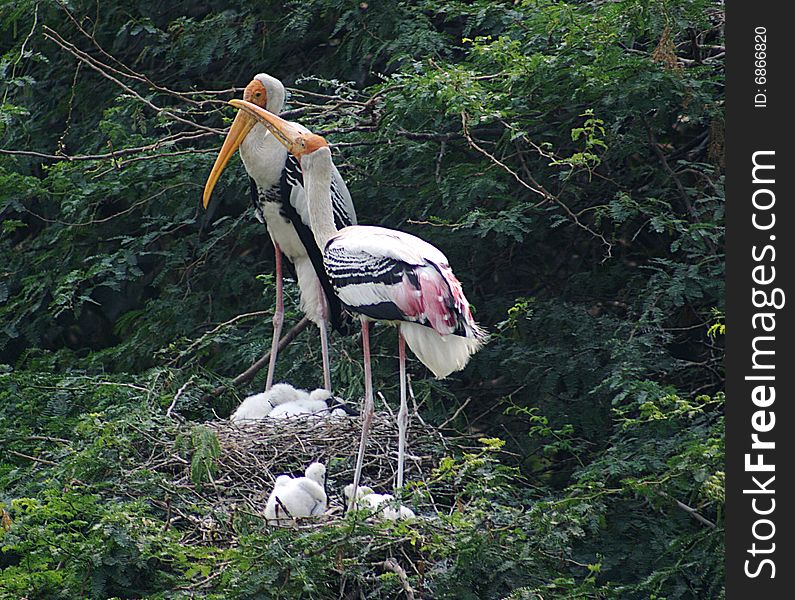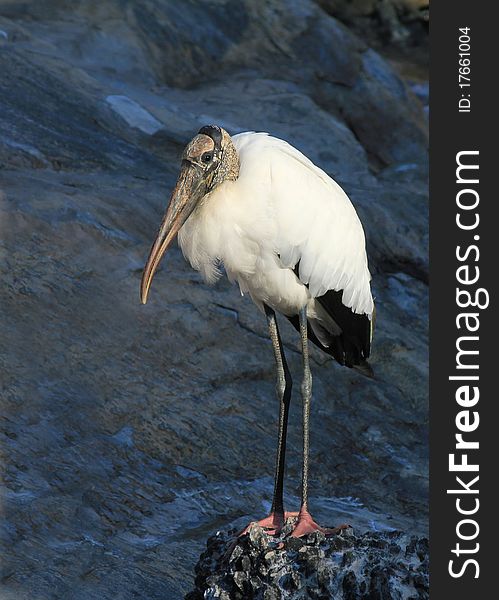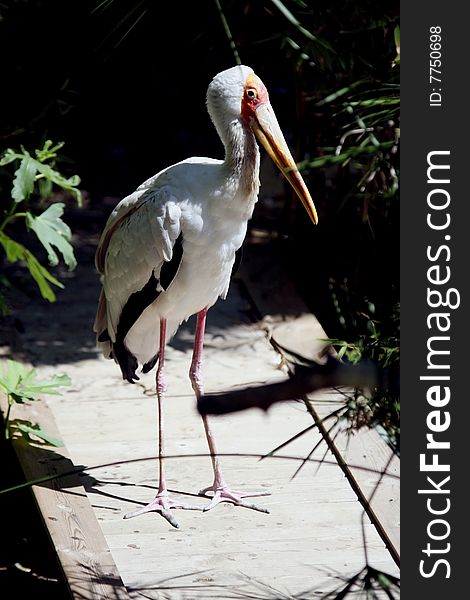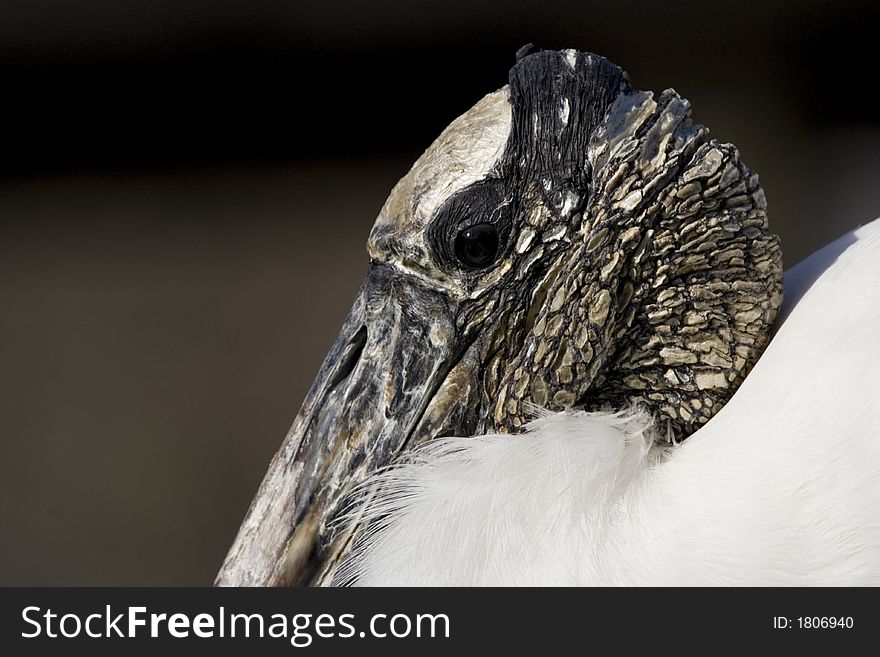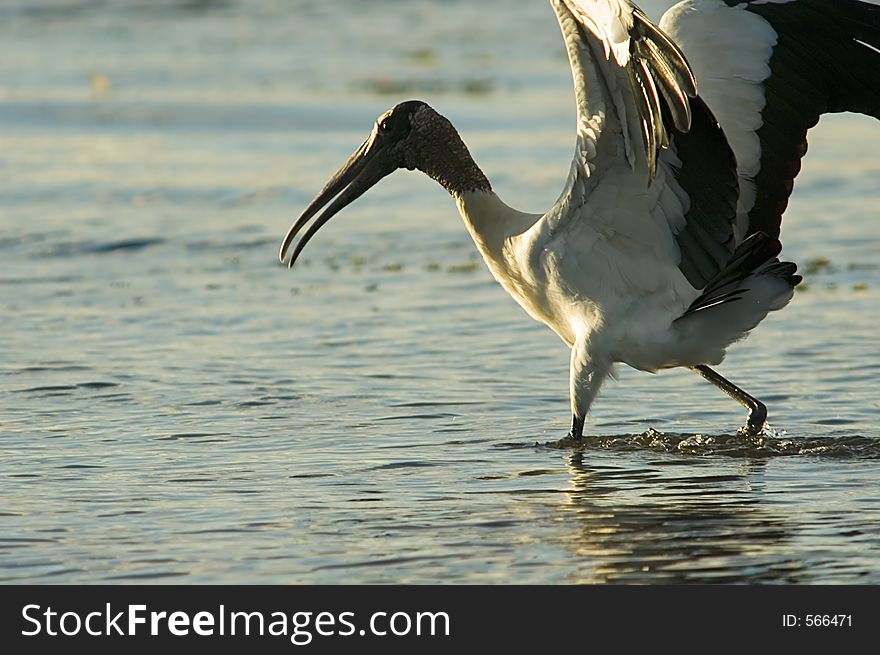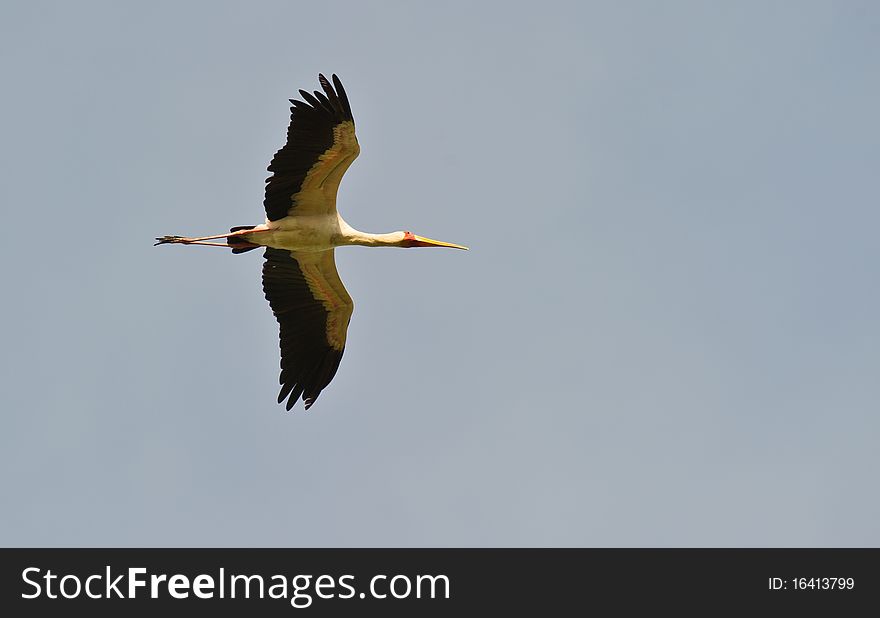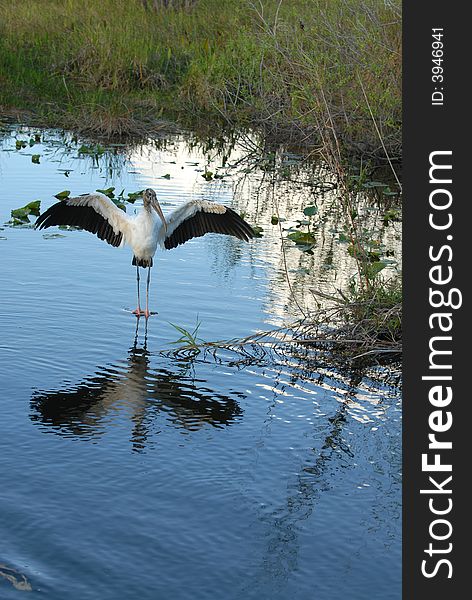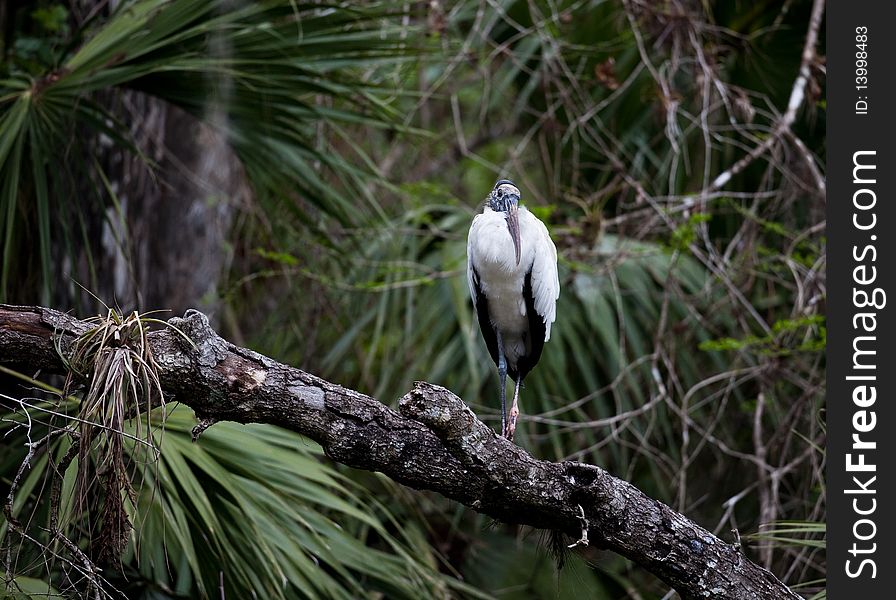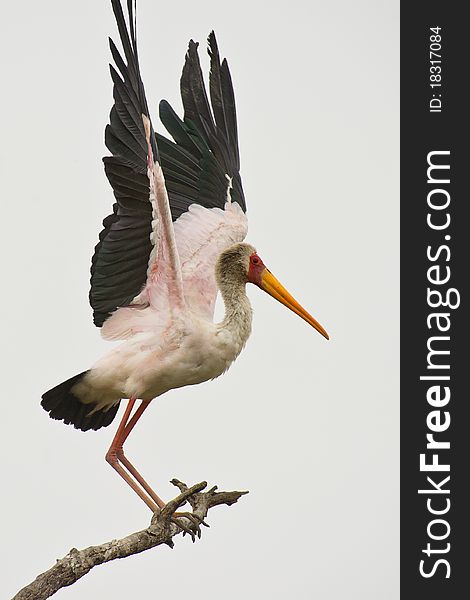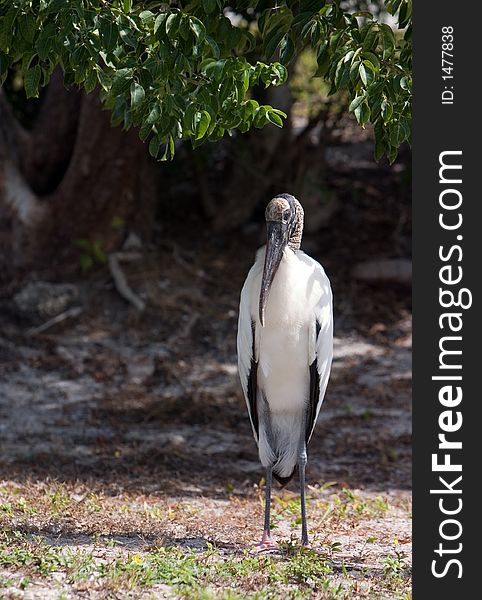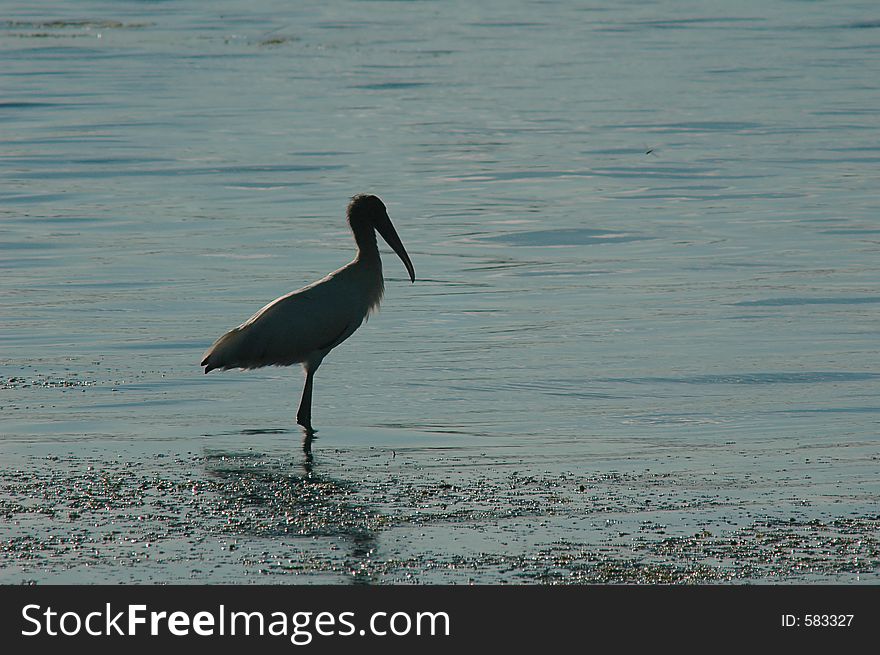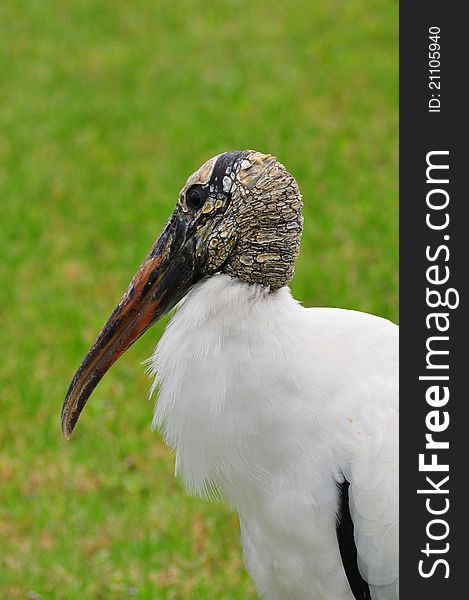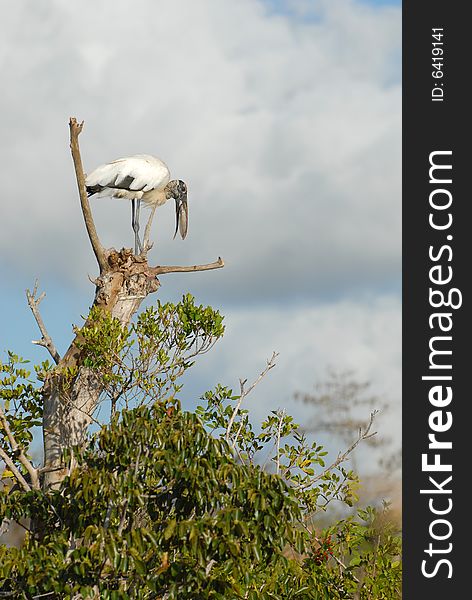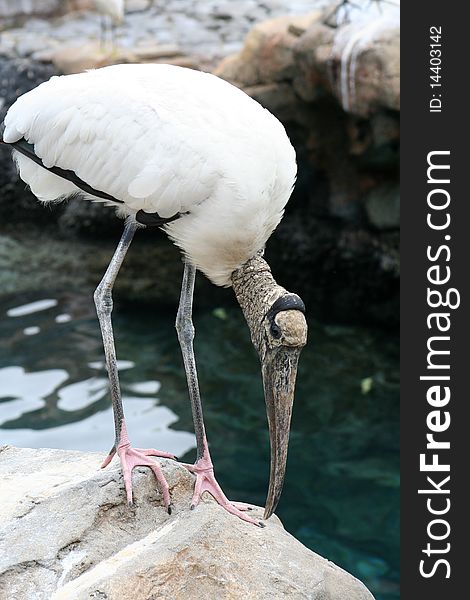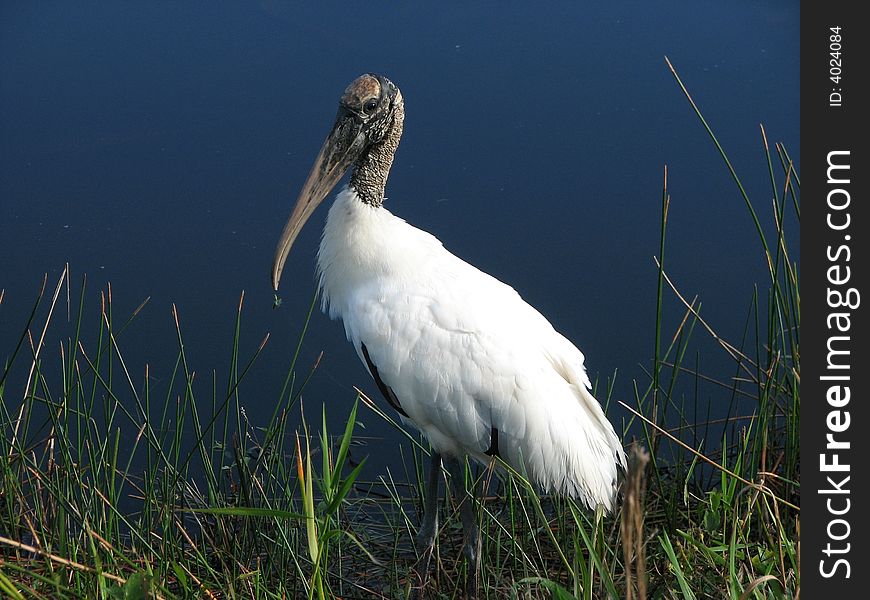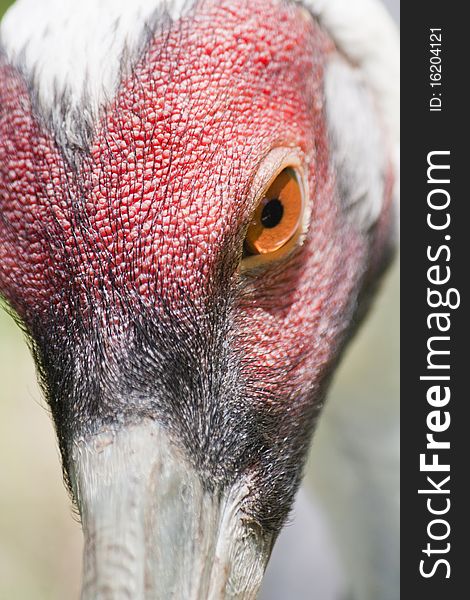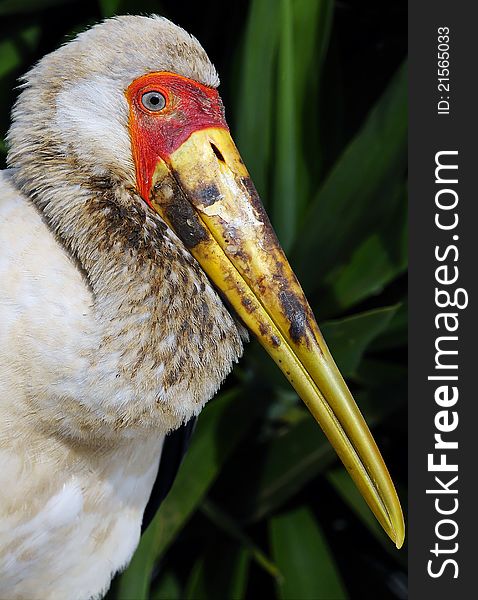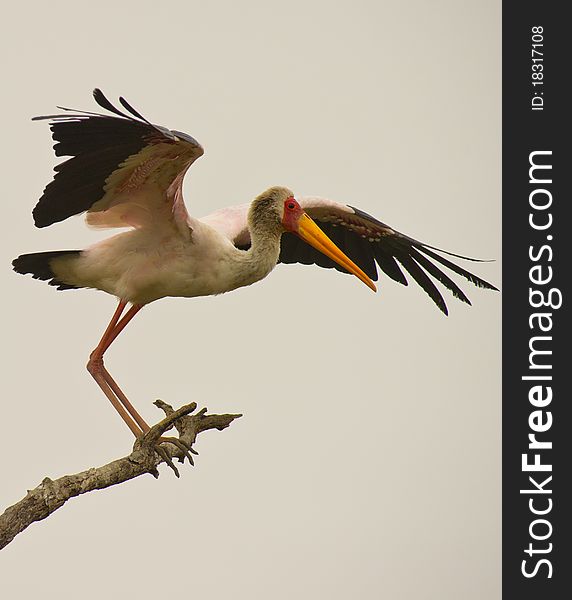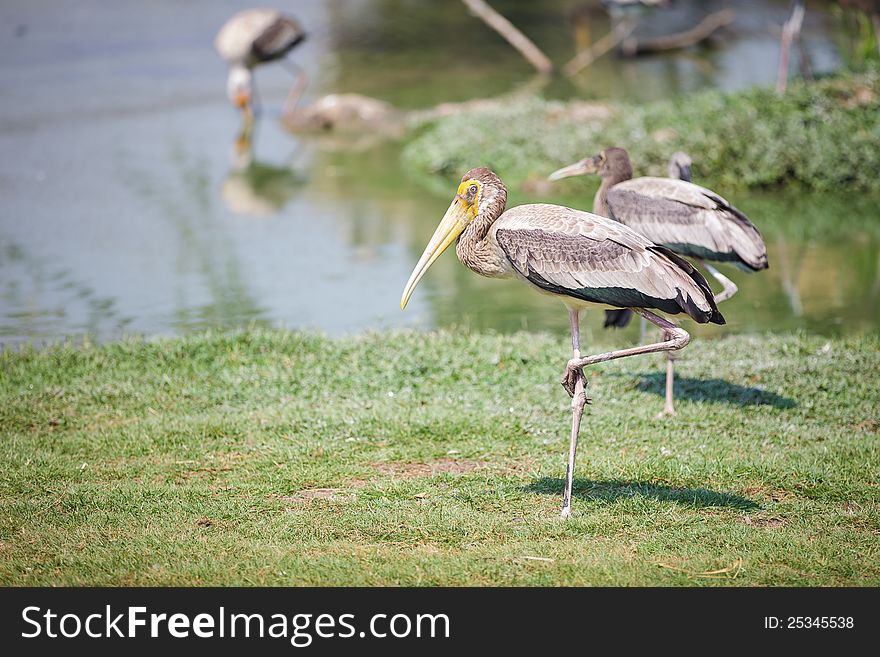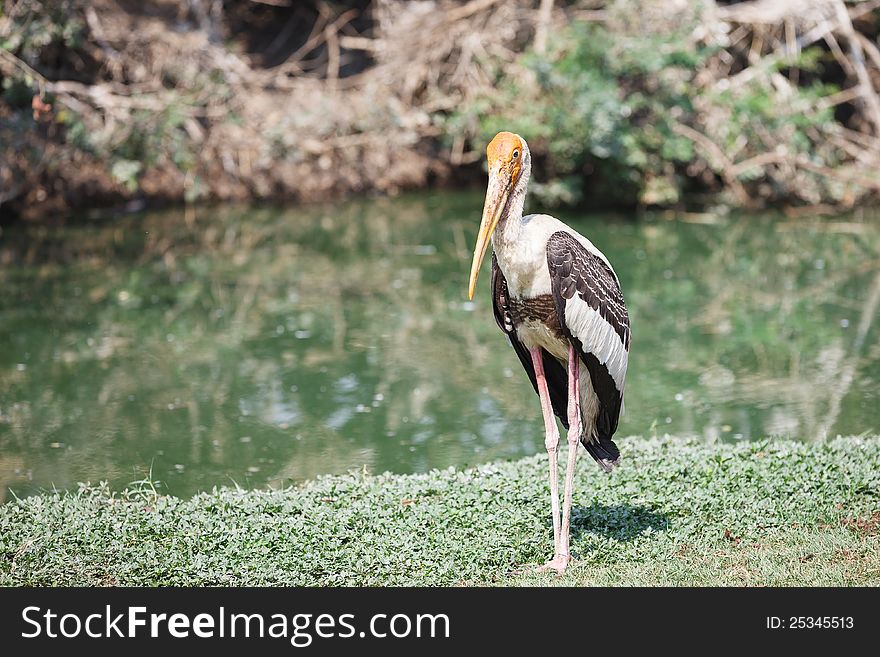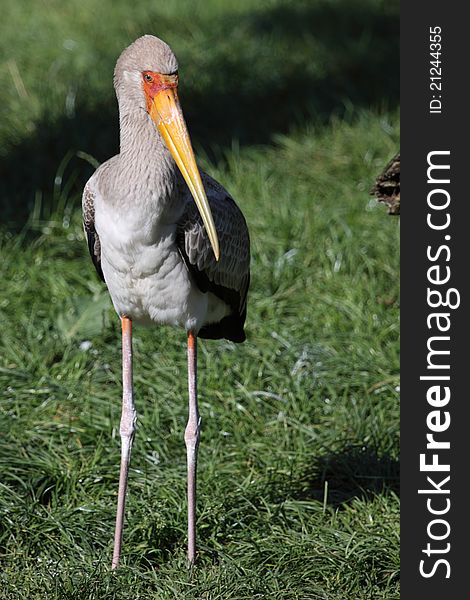
The Painted Stork (Mycteria leucocephala)
The Painted Stork (Mycteria leucocephala) is a large wading bird in the stork family. It is found in the wetlands of the plains of tropical Asia south of the Himalayas in South Asia and extending into Southeast Asia. Their distinctive pink tertial feathers give them their name. They forage in flocks in shallow waters along rivers or lakes. They immerse their half open beaks in water and sweep them from side to side and snap up their prey of small fish that are sensed by touch. As they wade along they also stir the water with their feet to flush hiding fish. They nest colonially in trees, often along with other waterbirds. They only sounds they produce are a weak moan or sounds produced by bill clattering.
This large stork has a heavy yellow bill with a down-curved tip that gives it a resemblance to an ibis. The head of the adult is bare and orange or reddish in colour. The long tertials are tipped in bright pink and at rest they extend over the back and rump. There is a distinctive black breast band with white scaly markings. The band continues into the underwing coverts and the white tips of the black coverts give it the appearance of white stripes running across the underwing lining. The rest of the body is whitish in adults and the primaries and secondaries are black with a greenish gloss. The legs are yellowish to red but often appear white due their habit of urohidrosis or defecating on their legs especially when at nest. The short tail is black with a green gloss.
© Drsandy007 | Stock Free Images
Similar Free Images


